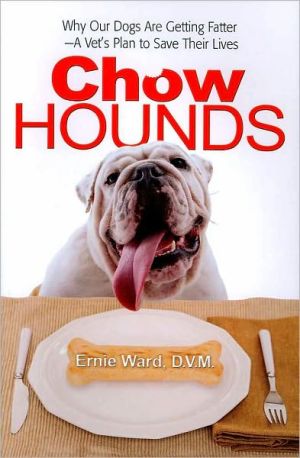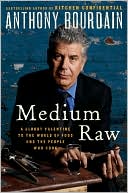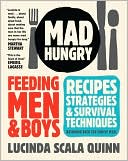Chow Hounds: Why Our Dogs Are Getting Fatter -A Vet's Plan to Save Their Lives
Is Your Dog Big Boned, Overly Fluffy . . . Or Does He Need a Doggy Diet?\ Almost half of the dogs in North America are overweight or obese, putting them at risk for major medical problems and untimely death. Is your dog one of them?\ Esteemed national television veterinarian and founder of the Association for Pet Obesity Prevention, Ernie Ward has helped hundreds of dogs reclaim their optimum health with his comprehensive plan, and now he can help your dog, too. In this unprecedented look at...
Search in google:
Is Your Dog Big Boned, Overly Fluffy . . . Or Does He Need a Doggy Diet? Almost half of the dogs in North America are overweight or obese, putting them at risk for major medical problems and untimely death. Is your dog one of them?Esteemed national television veterinarian and founder of the Association for Pet Obesity Prevention, Ernie Ward has helped hundreds of dogs reclaim their optimum health with his comprehensive plan, and now he can help your dog, too. In this unprecedented look at how we care for our pets, Dr. Ernie opens our eyes to the shocking truth about why we have unknowingly created a Perfect Storm of Portly Pets. For example, did you know that many pet foods are so spiked with sugar and fat that they actually cause your dog to eat even when she isn't hungry? Or that many pet formulas are so loaded with carbohydrates that they're causing a nation of carboholic canines? And even worse: Most well-intentioned pet owners are overfeeding their dogs by 25 percent every day. The good news is there are simple ways you can turn the tide for good—and for the good of your dog. You'll discover:Must-know tips for stocking a healthy pet pantry Homemade meals and healthy treats that won't pack on the pounds How to avoid the unscrupulous marketing and packaging of some pet foods, supplements, and weight-loss formulas The best activities and exercises to maximize your pet's fitness without maxing out your time. With cutting-edge science and ultra-practical tips, Dr. Ernie will help you give your dog the gift of great health that he or she deserves.
Pet obesity is a huge problem. How big? To better answer this question, the Association for Pet Obesity Prevention (APOP), conducted the first National Pet Obesity Awareness Day Study in 2007. The findings were alarming: 43 percent of all dogs were assessed by a veterinary health-care provider as overweight or obese. By 2009, the findings were worse: 45 percent of all dogs—almost one-half—were classified as overweight or obese. And what if your dog isn't obese but is just toting around a few extra pounds? Owners who view their dogs' 'few extra pounds' as no big deal are greatly underestimating the potential health threat. Even as few as two or three extra pounds may be silently damaging your dog's vital organs.\ The Problem with Extra Pounds\ When I was in veterinary school in the late 1980s, very little emphasis was placed on the role fat tissue played in maintaining health or causing disease, especially in dogs and cats. In all honesty, fat was viewed as an inert by-product of excess calories. Unfortunately, that way of thinking hasn't changed much even though numerous studies have now proven that fat is a much more active tissue than we ever imagined and a direct cause of a multitude of diseases. These findings have led scientists to refer to fat as the 'second pancreas' because of the number of hormones and compounds that fat tissue secretes.\ All fat is not created equal. There are two types of fat: white adipose tissue and brown adipose tissue, which serve two different purposes and behave very differently in the body. White adipose tissue is the most common type of fatty tissue found in dogs and humans. Historically, white adipose tissue was thought to serve three primary functions: heat insulation, cushioning of vital organs, and, most important, as being a source of energy. We now know about a dark side to excess fat. Current scientific thought places a danger sign clearly above increased abdominal or belly fat—the fat you may see hanging down on your dog's underside just behind the ribs. In humans, this area is known affectionately as a potbelly and results from too much white adipose tissue. Researchers have discovered that this belly fat produces a multitude of chemicals and compounds that signal other cells to perform some action. Some of these actions are beneficial, while others are potentially damaging and can cause conditions such as high blood pressure and diabetes. Because excess fat produces harmful molecules, obese dogs are in a chronically inflamed state, akin to having an endless infection or fever. In fact, in an article in Science, researchers at Boston's Dana-Farber Cancer Institute characterized obesity as a 'low-grade inflammatory state' that was unhealthy and contributed to a number of medical problems.\ Why Addressing Canine Obesity Is Important\ 1. You want your dog to live a long time. Overweight pets, like people, have a higher incidence of life-stealing health complications.\ 2. You want your dog to be healthy and active. Dogs were meant to run and play. Obesity robs them of the ability to enjoy and lead an active life.\ 3. You want your dog to be pain-free and happy. One of the main complications of obesity is painful arthritis. Your dog deserves a pain-free life.\ 4. You want your dog to live a life without medications. All medications carry risk. If you can avoid drugs, you should.\ 5. You want to save money on your pet's bills. Obesity complications are expensive. The surest way to save money is to prevent disease.\ Chow Hounds. No part of this publication may be reproduced, stored in a retrieval system or transmitted in any form or by any means, without the written permission of the publisher. Publisher: Health Communications, Inc., 3201 SW 15th Street, Deerfield Beach, FL 33442








